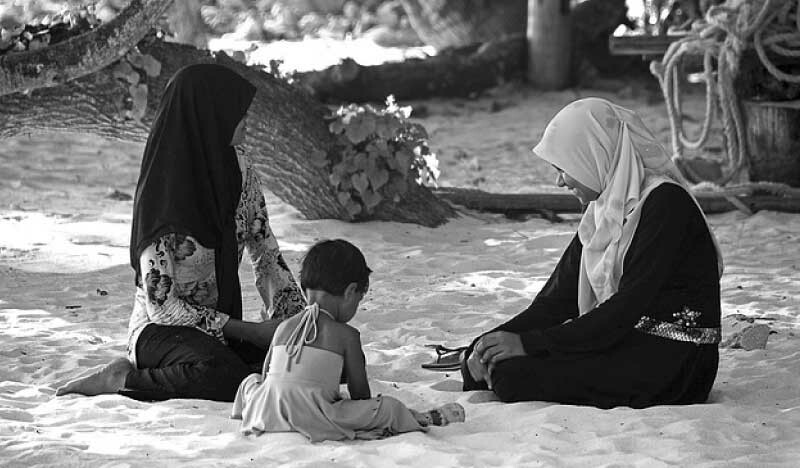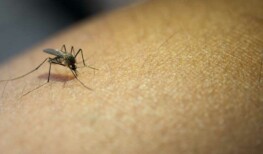FACT-CHECK: Is Sexual Harassment Caused By How Women Dress?

Photo: The Borgen Project
Although the Maldives has made several strides in gender equality over the years, our island nation has a long history of sex-related crimes, especially against women and children. A 2006 survey revealed one-third of women in Maldives are victims of sexual harassment, with 60% facing harassment for the first-time before the age of 14. More recent surveys show 96% of women have experienced street harassment at some point in their lives, according to the UNFPA.
Sexual harassment takes place when individuals experience unwelcome sexual remarks, gestures, or actions, notably based on their gender. One argument that often crops up in discussions around sexual harrassment puts the blame on the victim’s choice of dress, implying that a woman’s dress somehow invites or justifies sexual harassment and catcalling. While ample evidence of this argument being made can be found in online comment sections, a 2016 survey found 71.9% of respondents agreed that an employee’s dress can provoke sexual harrassment in the workplace.
This belief places the burden of harassment on the victim rather than holding perpetrators accountable for their actions. With sexual harassment alarmingly common in Maldives, it is crucial to dispel myths which are harmful to victims and allows perpetrators to act with impunity.
Claim: Sexual Harassment Happens When A Woman Dresses “Inappropriately”.
Fact Check: False
1. Lack of Correlation Between Clothing and Harassment:
Numerous studies have shown that there is no direct correlation between the clothing women wear and the likelihood of experiencing sexual harassment or catcalling.
A study published in the journal Psychology of Women Quarterly in 2016 found that perpetrators of harassment often target women regardless of their attire, confirming that harassment is more about power and control than clothing choices (Holland & Haslam, 2016).
Sexual harrassment and abuse can happen to anyone, regardless of their choice of clothing. Victims of sexual harrassment in Maldives have ranged from local women, foreign women visiting as tourists, to young school children.
In a fully Islamic nation like the Maldives, where the local population observes modest attire, the high number of women reporting some form of sexual harrassment clearly indicates that clothes have nothing to do with it.
From another perspective, the argument that men are “tempted” into sexual harrassment by someone’s choice of dress is sexist against men, suggesting that they inherently lack self-control and common human decency. By virtue of this argument, men in general should not be trusted with roles of high responsibility and authority.
2. Cultural Norms and Social Attitudes:
Instead, sexual harassment and catcalling are deeply rooted in cultural norms and social attitudes towards gender roles and women’s autonomy. These behaviours stem from a sense of entitlement and a lack of respect for women’s boundaries, rather than from the clothing they wear. In many cases, perpetrators use clothing as an excuse to justify their actions, perpetuating harmful stereotypes and victim-blaming.
According to the ‘The Psychology of Sexual Harassment’, men’s ideas about what it means to be masculine often predict how they might think and act when it comes to sexual violence. When men believe in being dominant over women and view conquest as important, it can lead to sexual harassment. This influence can be stronger when men are in groups, where some might harass others to show they’re manly.
Other factors that contribute to sexual harassment include male dominant hierarchies, places where such behavior is tolerated, environments where people are treated as objects, and situations where harassment is seen as a way for men to bond.
Personal factors like having sexist attitudes and seeing short-term relationships as acceptable also play a role. Believing in rape myths, sticking to traditional ideas of masculinity, and lacking empathy can also make someone more likely to harass others.
Interestingly, personality traits like narcissism, psychopathy, and Machiavellianism are linked to a tendency to sexually harass others.
The Verdict: FALSE
The notion that women’s dress invites sexual harassment and catcalling is not supported by evidence. Instead, these harmful beliefs perpetuate victim-blaming and contribute to a culture of impunity.
From a legal and human rights standpoint, no individual should endure harassment or violence based on their choice of clothing. According to the United Nations (1993), sexual harassment constitutes a form of gender-based violence that infringes upon human rights and fundamental freedoms.
To address harassment properly, it needs to be understood that perpetrators make these choices out of their own free will, despite knowing better. This calls for the public to challenge entrenched attitudes and behaviors while holding perpetrators accountable for their actions. By debunking myths and promoting gender equality, we can create safer and more inclusive communities for everyone







